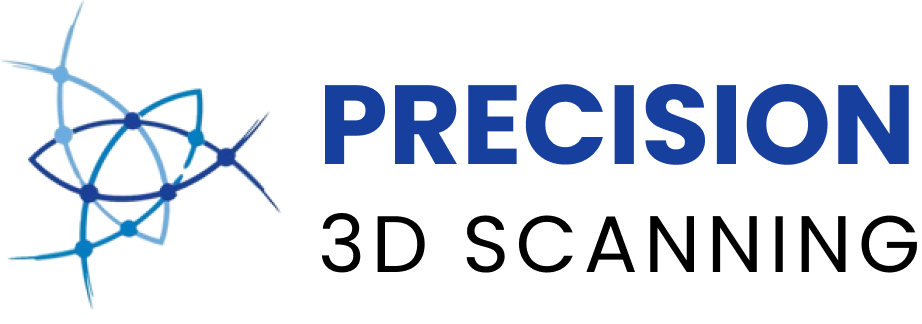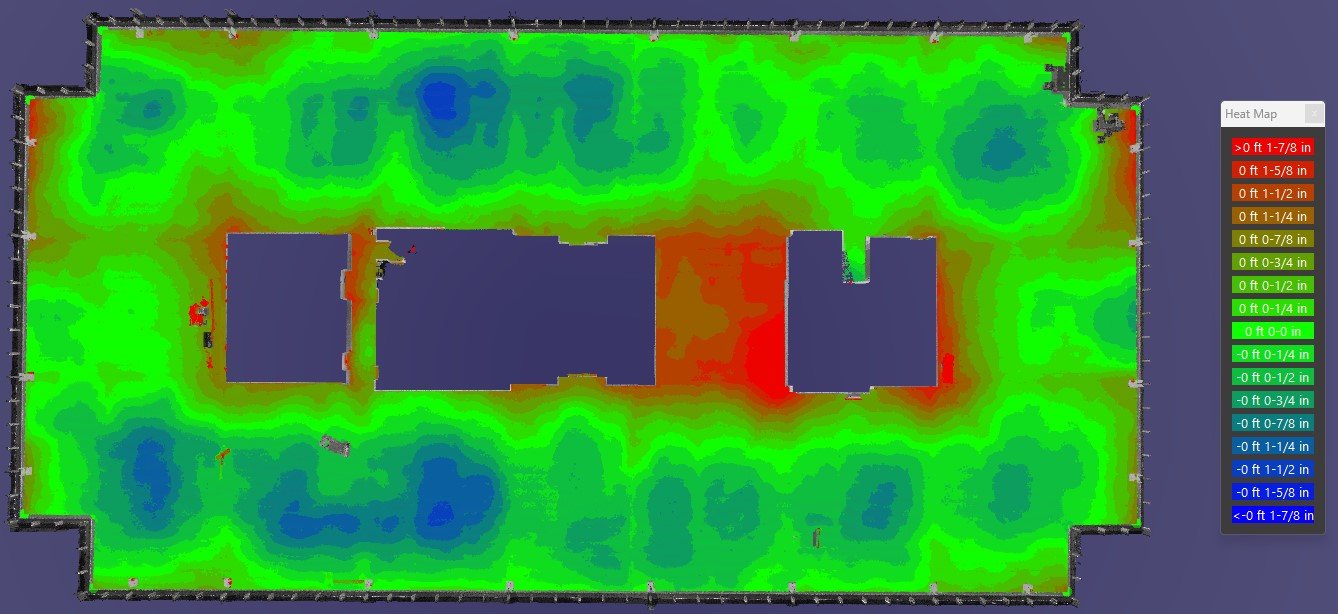In the ever-evolving landscape of the construction industry, technological advancements continue to reshape traditional practices. By utilizing Lidar Technology, Precision 3D scanning is a leader in innovation. One such innovation that stands out is the use of concrete elevational heatmaps in concrete finishes. This transformative tool has found its niche in the concrete and flooring sector, offering unprecedented insights and benefits that significantly impact efficiency, quality, and overall project success.
Understanding Elevational Heatmaps
Before delving into the applications and advantages, let’s explore what elevational heatmaps are and how they work. Elevational heatmaps are graphical representations that use color gradients to display variations in elevation across a surface. In the context of the concrete and flooring industry, these heatmaps provide a visual depiction of the highs and lows in a concrete finish, offering a comprehensive view of the surface’s topography.
Applications in Concrete Finishing
Quality Control
Elevational heatmaps serve as a powerful tool for quality control in concrete finishing. By identifying uneven surfaces or potential imperfections, construction professionals can take corrective measures before the concrete cures. This proactive approach ensures a smoother and more uniform finish, reducing the need for rework and saving both time and resources.
Precision in Flooring Installation
For the flooring industry, precision is paramount. Elevational heatmaps enable flooring installers to identify subtle variations in the concrete surface, allowing them to adjust their installation techniques accordingly. This precision not only enhances the aesthetic appeal of the flooring but also contributes to its longevity and durability.
Optimizing Material Usage
With elevational heatmaps, contractors can optimize the use of materials, such as self-leveling compounds. By accurately assessing the surface elevation, they can determine the exact amount of material needed to achieve the desired finish. This not only reduces material wastage but also minimizes costs associated with excess usage.
Advantages for Construction Professionals
Time Efficiency
Traditional methods of assessing concrete finishes often involve manual measurements and subjective judgments. Elevational heatmaps expedite this process by providing a visual representation of the surface topography, allowing construction professionals to make informed decisions quickly. This increased efficiency accelerates project timelines and facilitates a more streamlined construction process.
Enhanced Collaboration
Elevational heatmaps act as a communication bridge between different stakeholders involved in a construction project. Architects, engineers, and contractors can easily interpret and discuss the visual data, fostering collaboration and ensuring that everyone is on the same page regarding the desired finish and quality standards.
Data-Driven Decision-Making
The data generated by elevational heatmaps empowers construction professionals to make data-driven decisions. This not only improves the accuracy of the construction process but also enables continuous improvement through the analysis of historical data. Over time, this leads to refined construction practices and higher overall project quality.
Case Studies
High-Rise Construction Project
In a high-rise construction project, concrete elevational heatmaps were employed to assess the concrete finishes on each floor. The visual data revealed areas with uneven surfaces, allowing the construction team to address these issues before proceeding with subsequent construction phases. As a result, the project experienced a significant reduction in rework, leading to substantial time and cost savings.
Commercial Flooring Installation
A commercial building with diverse flooring requirements utilized elevational heatmaps to ensure precise flooring installation. By identifying variations in the concrete surface, the flooring team adapted their installation techniques for different areas, resulting in a flawless and aesthetically pleasing finish that met the client’s specifications.
The integration of elevational heatmaps in the concrete and flooring industry represents a paradigm shift in construction practices. From enhancing quality control to optimizing material usage, the benefits of this technology are far-reaching. As construction professionals increasingly recognize the value of elevational heatmaps, we can expect to see continued advancements in this field, ultimately contributing to a more efficient, collaborative, and data-driven future for the construction industry.
Ready to start? Click Here. ( https://precision3dscanning.com/request-a-quote/ )
Want to see more? Click Here: https://www.youtube.com/@PrecisionSA2023

